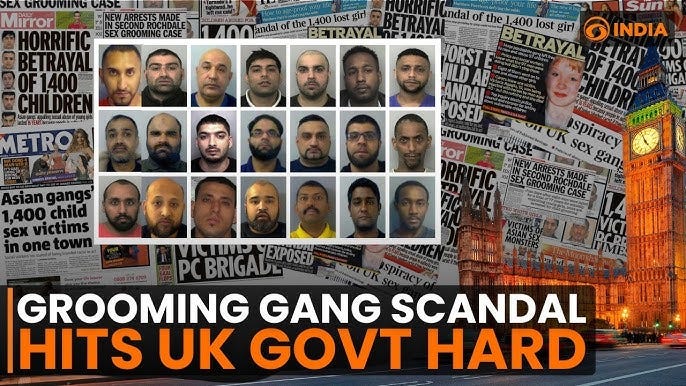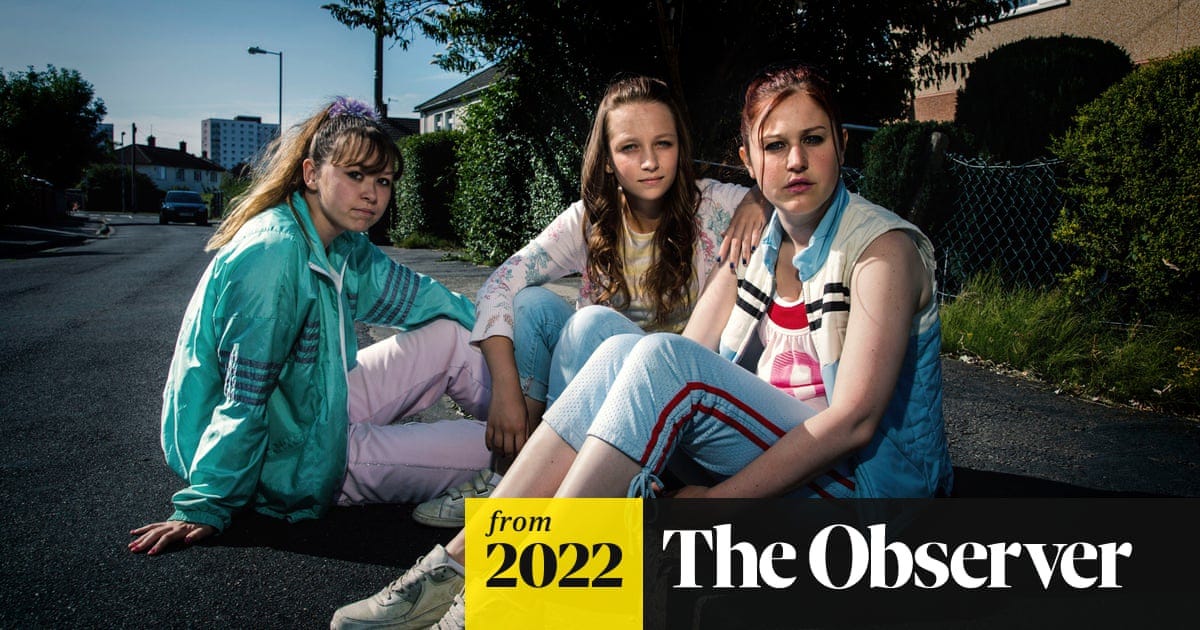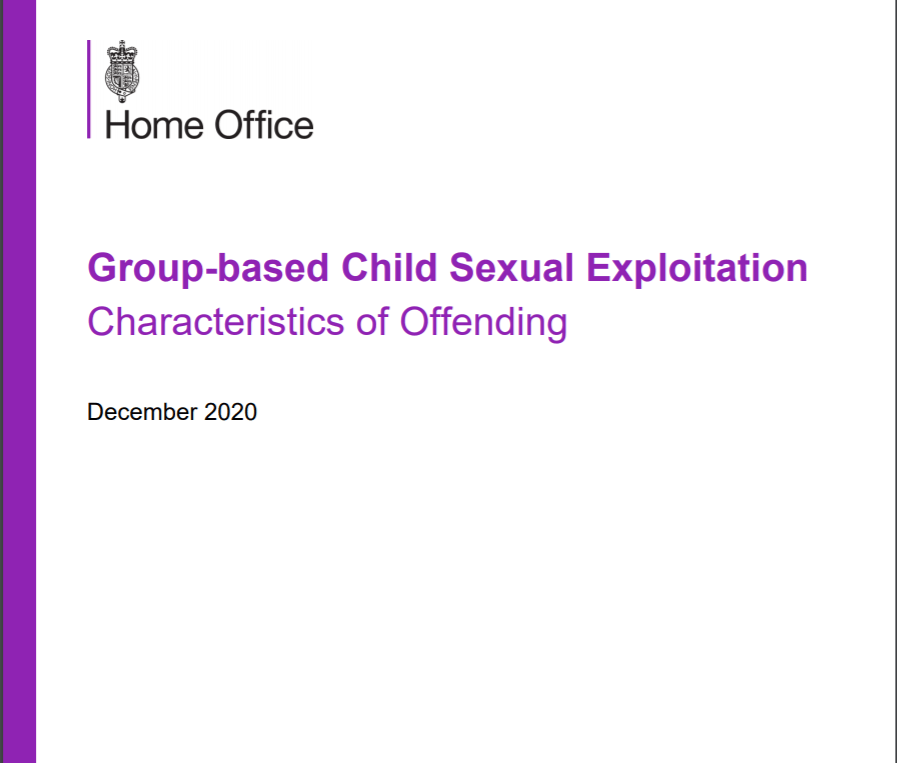Feminism and the Grooming Gangs
Why elite feminists prefer to target white men as the UK’s primary sexual predators
Just don’t ask where all this outrage for rape victims was when a jury in a civil trial concluded Farage’s good friend Donald Trump had sexually abused the writer E. Jean Carroll, or when Trump proposed Matt Gaetz—who was facing allegations (which he denied) of sex with a minor—for attorney general.
Gaby Hinsliff, “This is how the grooming scandal is being weaponized”
**
For decades, most prominent feminists in the United Kingdom kept quiet about the Pakistani Muslim grooming gangs, preoccupied with the gender pay gap, the nefarious influence of Andrew Tate, or the need to criminalize “persistent staring.”
When they do address the issue, their response is to make bizarre equivalencies, as above, and to insist that all men are equally to blame for child rape and exploitation.
In a recent article for The Spectator, for example, British feminist advocate Julie Bindel, one of the few feminists who did write about the scandal in earlier years, was toeing the party line. In the final paragraph of her article (“Grooming gang victims are still being ignored”), she expressed the conviction that
“We need to see a wider acknowledgement of the scale of ‘grooming gangs’ beyond racial or cultural lines, because child sexual abuse has been going on for centuries and there will be plenty more victims until the police really address the issues.”
In Bindel’s formulation, a particular sex crime is universalized as “child sexual abuse” to smear all men in all times.
Bindel even suggested that white girls had been receiving rather too much attention while “black and minority” victims have had their experiences “obliterated by a narrative that portrays ‘grooming gangs’ as exclusively Pakistani Muslim men abusing white girls.” That dishonest sentence, in which the word exclusively is made to carry a heavy load of implication, is the only time in the entire article that Bindel uses the words Pakistani or Muslim. (No one credible has ever suggested that only Pakistani Muslims were involved or that only white girls were victimized.)
As a feminist of the Left, Bindel had always treated the grooming gangs story with caution. In “Mothers of Prevention,” an article she published in The Sunday Times back in 2007, she gave the names of convicted abusers and identified them as Pakistani Muslim, but she pressed home the point that “One of the many tragedies resulting from this phenomenon is how it is fueling racism and mistrust of whites towards Pakistanis where little existed previously.” Perhaps the girls raped at 12 and pimped out at 13 would have been better off if there had been a bit more mistrust and “racism” in their communities. And given how many people in positions of power worked together to protect the perpetrators, the racism seems to have been solely directed against white Britons, especially against the parents who pleaded in vain for the criminals to be stopped.
All would have been different if the sexual exploitation had been carried out primarily by white men. There would have been no reticence by feminist commentators then, no concern about increased mistrust and hatred of white men, or all men. In fact, Bindel and her ilk want there to be an increase of such hatred (who can forget her sweeping “Why I Hate Men”). By claiming that the organized grooming and sexual abuse of young girls is simply what all British men do, of every race and creed, she is explicitly promoting unfair prejudice.
Decades ago, feminists accepted that their most pressing project, and the one through which they secured their own moral authority, demanded an assault on western culture in general and white men in particular. To refuse to ally themselves with other dissident peoples opened them to charges of complicity in white privilege.
Feminists’ politically-correct refusal to spotlight the reality of the grooming gangs should remind us that the protection of girls and women is not, if it ever was, modern feminism’s ultimate concern. Feminism is primarily a subversive and revolutionary ideology. It respects and at times promotes violence, including violence against girls and women, in the name of utopian cultural transformation and the overthrow of traditional norms and structures. To this end, it is committed to the destruction of white-majority Christian societies, which it claims to be ultimately responsible for global inequality and injustice. At its black heart, feminism encourages the degradation of girls and women, and the demoralization of good men, because it is at war with the civilized order itself.
**
A case in point is feminist academic Ella Cockbain, an associate professor of security and crime science at University College London as well as the lead researcher for a group that studies human trafficking, smuggling, and exploitation. Cockbain is the voice of elite feminism in Britain.
In a typical article for The Guardian (“Not even Suella Braverman’s own department agrees with her about ‘grooming gangs”) Cockbain sounded all the familiar feminist and “critical race” themes, stating that “This narrative around protecting (white) girls from Pakistani-heritage men is actively dangerous.” It is dangerous because, in addition to overlooking “boys and ethnic minority children” (one of the first times ever that a feminist has been concerned about ignored male victims, about which she says no more), it also allegedly “deflects agencies’ attention from offenders who don’t meet the stereotypes.”
If only it were true that agencies had been paying (too much) attention to offenders who met the stereotypes!
Cockbain does not question the extent and severity of child sexual abuse generally (like Bindel, she moves the discussion as quickly as possible away from grooming gangs specifically). She alleges that such abuse is “horrendously common,” with “half a million children […] sexually abused in the U.K. each year.” But the focus on Pakistani Muslims raises her ire. This is, she claims, a “very narrow and selective narrative that has been deliberately constructed.” It embodies and spreads “Islamophobic and xenophobic prejudice” and recycles “familiar tropes of the international far-right.” There is a “core truth” to the framing (there were some abusers from the Pakistani community who targeted white girls), but the issue is “wrapped up in distortions, exaggeration, misinformation and disinformation.”
Cockbain doesn’t say what parts of the story are distorted or exaggerated. Is it untrue that in as many as 50 towns in England and Wales, Pakistani Muslim men formed community-wide networks in which taxi drivers, take-out shop owners, community leaders, and religious authorities collaborated in and closed ranks around the sexual exploitation of minors in a way that large groups of white Britons have never been found to do? Is it untrue that police, social workers, local councilors, MPs, and Home Office officials all knew about what was going on for decades yet said nothing for fear of inciting riots by Pakistani Muslims, losing crucial Muslim votes, and provoking accusations of racism?
In 2011, veteran Times reporter Andrew Norfolk had uncovered evidence that police and social services agencies had for years been quietly discussing what they were seeing but “denied publicly that ethnicity [had] any relevance.” He quoted Detective Chief Inspector Alan Edwards, who pointed to the taboo that kept officials silent: “No one wants to stand up and say that Pakistani guys in some parts of the country are recruiting young white girls and passing them around their relatives for sex, but we need to stop being worried about the racial complication.”
One of the mothers quoted in Bindel’s afore-mentioned article said she was told by a police officer that he did not “want to start a race riot” by arresting Pakistani men for sexual offences. Crown Prosecutor Nazir Afzal, himself of Pakistani heritage, noted in 2012 that “white professionals’ oversensitivity to political correctness and fear of appearing racist may well have contributed to justice being stalled” in the prosecution of Rochdale child rapists. Community leader Mohammed Shafiq, also writing for The Times, went so far as to allege that “The simple answer is that these people think that white girls have fewer morals and are less valuable than our girls. They also believe that by grooming white girls there will be no reprisal within their own community.”
None of these or any other such statements gives Cockbain pause. She simply quotes a report by the Home Office (the government department in charge of law enforcement and counter-terrorism) that concluded in 2020 that “group-based CSE (child sexual exploitation) offenders are most commonly white.”
I recommend that interested parties read this report in full to observe how it managed to come to this preposterous conclusion. Cockbain emphasized that the UK government could find “no reliable, generalizable evidence of ethnic disproportion among such offenders.” The statement is quite a howler, as we will see. Neither is it particularly surprising that a government ever-sensitive to multicultural pieties, and terrified of offending its restive Pakistani Muslim community, should produce a report (amply based, it turns out, on Cockbain’s own research) that submits to multicultural pieties.
Cockbain makes it clear that no matter how many times chiefs of police or MPs are quoted on the matter, she simply doesn’t and won’t believe that fear of being accused as “xenophobic” or “Islamophobic”—her own go-to slurs—played any significant role in much-reported police failures. She asserts that “Given everything we know about institutional racism in policing, it seems wildly implausible that ethnic minority offenders were routinely let off the hook but their white counterparts were not.” The clear implication here and elsewhere in Cockbain’s article is that groups of white men, operating with the tacit approval of their communities, were just as likely, if not more likely, than Pakistani Muslim men to groom and gang-rape adolescent girls, and that decades-long claims about religiously-motivated sexual abuse were heavily distorted by Islamophobic fear-mongering.
A close reading of the 2020 Home Office report, alleged by Cockbain to lay to rest the narrative of Pakistani predation, shows that it is Cockbain’s own narrative that is “narrow and selective.” While she accurately quotes the report in its claim that sex crime offenders “are most commonly white,” the statement does not mean what she presents it as meaning. If there is one take-away from the bland, sanitized, and ultra-cautious report, it is that despite decades of rumors, internal discussions, citizens’ complaints, parents’ attempted lawsuits, and statements by victims, UK police and other officials have not been at all assiduous about recording the ethnicity of child-rape perpetrators. Over and over again, the report stresses that “the available evidence is weak and robust data is scarce” (p. 6). One might almost imagine that officials deliberately avoided keeping clear records (a point raised recently by British political scientist Matthew Goodwin).
But even the partial figures provided in the Home Office report, while incomplete and inconsistent, do not support Cockbain’s contention that there is no “ethnic disproportion” in offending. Here, for example, is the precise paragraph that undergirds the report’s contention that offenders are “most commonly white”:
CEOP (2011) [the Child Exploitation and Online Protection Centre] undertook a data collection with police forces, children’s services and specialist providers from the voluntary sector, looking at those allegedly involved in ‘street grooming’ and CSE [Child Sexual Exploitation]. Data was returned on approximately 2,300 possible offenders, but approximately 1,100 were excluded from analysis due to a lack of basic information. In the remaining 1,200 cases, ethnicity data was unknown for 38% of them. Where data was available 30% of offenders were White, while 28% were Asian. Due to the amount of missing data, both basic offender information and ethnicity specifically, these figures should be treated with caution.
Even an English literature specialist with no training in social science research can see the clumsy sleight of hand here. The 2011 census for England and Wales found that 86% of Britons were white, while only 2% of the population was Pakistani (often referred to as “Asian”). With such a population distribution, it is not surprising that 30% of sexual offenders would be among the white majority; in fact, such numbers show whites to be under-represented in these sexual crimes.
That 2% of the population was identified with 28% of the crimes, on the other hand, points to a massive disproportion—and this in a report keen to hide the reality. According to the government’s own numbers, Pakistani Muslims were vastly over-represented amongst grooming gang offenders.
Other investigations by the Child Exploitation and Online Protection Centre yielded even more striking data sets. The report notes that an investigation in 2013 found that of the 52 groups known to have participated in child sexual exploitation, “half of the groups consisted of all Asian offenders, 11 were all White offenders, 4 were all Black, and 2 were exclusively Arab. There were nine groups where offenders came from a mix of ethnic backgrounds. Looking at the offenders across all groups, of the 306 offenders, 75% were Asian.”
The ethnic disproportion is overwhelming, with the white majority constituting a small minority of offending groups and “Asians” constituting a super-majority. It seems that only an immense eagerness to indict white men and exonerate Pakistani Muslims could lead any researcher to present the Home Office findings in such a misleading manner.
What could cause an academic like Cockbain, fully aware of the nature of the grooming gang abuse, which was quite unlike other child sexual abuse in its flagrant, organized, community-wide brutality, to minimize its significance? Is she protecting her own previously-published research and claim to expertise? Is she sincerely convinced that groups of vicious white child rapists got away with what was falsely pinned on Pakistani men? Why does she prefer to believe that all men, including the white majority in her country, are equally culpable rather than accept that a particular group, alien in its religious and cultural sympathies, would choose to prey on girls it saw as inferior and expendable? The implications of Cockbain’s worldview and recommendations are worth exploring further.
**
It is no exaggeration to say that the anti-white, politically correct feminism on display in Ella Cockbain’s article supported, and perhaps even guaranteed, the appalling success of the grooming gangs in Britain and other European countries.
Feminism has made young girls sexually vulnerable by alienating them from their families, particularly their fathers, and encouraging them to believe that sexual self-expression is one of the highest goods. In continually campaigning against so-called “slut shaming,” feminists have insisted that girls should not be taught modesty or the importance of protecting themselves sexually. On the contrary, they were to learn, as Kate Millett advocated in a 1980 interview, to “express themselves sexually,” including with adults, in revolt against a controlling “patriarchal family structure” (“Sexual Revolution and the Liberation of Children”). Feminists repeatedly declared the home—not the streets and the strangers encountered there—to be the least safe place for girls and women (though research repeatedly finds that children are safest when living at home with their two biological parents).
I don’t think I’ve ever heard a feminist fully acknowledge the extent to which adolescent girls and teenagers often make terrible choices involving alcohol, drug-taking, and promiscuity. Motivated by strong feelings and contradictory impulses—to be flattered and looked after, to rebel, to experience powerful sensations—many young girls are attracted to danger, including the danger of bad boys and bad men. They often want to be the focus of sexual and romantic attention even when they are as young as 12 years old. Far from needing the freedom to be sexual, they need rules and oversight that may limit their ability to come under the power of malignant strangers who don’t love them.
But feminist laws and ideology created systems that exile fathers from the home and criminalize them, encouraging mothers to believe themselves better off raising children on their own, and empowered to alienate fathers. Girls in father-absent homes become particularly vulnerable to behavior problems, mental illness, addictions, and self-harm, often seeking alternative father-figures or acting out in anger.
As they were weakening the family generally, feminists also launched an war on white (Christian) men. Feminist critical race scholars such as bell hooks and Sherene Razack held white men uniquely responsible for the subjugation and “othering” of dark-skinned women and men, and ultimately for global violence. The only way for white feminists to avoid charges of complicity in hooks’ “white supremacist capitalist patriarchy” was to join people of color in reducing white men’s power. Together, they enacted laws to legalize discrimination against such men in order to keep them out of positions of influence and cultural esteem, all the while castigating them for their supposed bigotry, entitlement, and fascistic beliefs. At a time when many white men in the former mill towns of England’s north and Midlands were facing economic decline, the message was that white men’s time was rightly over: all that men could decently do was step back, reflect with shame, and allow women and non-whites to take charge.
Feminist culture in Britain could hardly have been better designed to foster girls who were, in the words of one commentator, “easy meat” for the Pakistani men who believed in the superiority of their own culture and religion. Some of them shared with feminists a contempt and hatred for the white men who were steadily losing domestic and communal authority. One pimp quoted in Bindel’s “Mothers of Prevention” spoke of his “great pleasure in having young white girls at his beck and call, knowing their parents would be out of their minds with worry.” He saw his actions as revenge against “racist” whites.
Some Sikh men fought with Muslim men when they realized the plight of their girls, and although the violence does not seem to have made police or prosecutors any more enthusiastic about stopping the grooming, it may have kept some Sikh girls out of harm’s way (see Scott McLoughlin’s “Easy Meat”: Multiculturalism, Islam and Child Sex Slavery (2014), pp. 62-72). White parents were met with indifference and inaction from police, and were sometimes themselves threatened with arrest, or actually arrested, if they sought to take matters into their own hands (see, for example, a father’s story here; and here).
Girls who wished to leave the grooming gangs were often threatened and had their families threatened. Some were tortured and murdered. But many of the grooming gang members had success in convincing girls to participate actively in their sexual exploitation, and to reject their own community and families. Julie Bindel’s “Mothers of Prevention” (2007) told of the frustration of mothers who watched as their daughters became deeply enamored of Pakistani “boyfriends” and willing to do anything for them, including prostituting themselves to multiple men per night to help the “boyfriend” pay off a claimed debt. One mother found a website with her 13 year old daughter’s picture along with those of other girls being pimped. “She was posing with the flag of Pakistan. There were 97 names of Asian men posted on it who had made contact with her. She was asking for Asian men to ‘date.’ She said she hated white people.” A white security guard at a mall where the gangs approached and picked up girls put it bluntly: "It's the girls […] they love the Pakis. We can't get a look in."
Few of the girls saw themselves as victims. It often took them years to speak against “the abusers they had mistaken for friends and lovers,” as one newspaper report put it. The victims described in one 2013 sentencing report were subject to appalling abuse from the time they were 11, 12, and 13 years old, yet were in some cases described as “obsessed” with their abusers and hostile, even violent, towards family members who tried to help them. One girl was sodomized and vaginally raped, starting when she was 11, while her disabled parents were present in the home; she was also taken elsewhere to have sex with up to 10 men, raped with objects, and branded with her abuser’s initials near her anus (see Sentencing remarks, pp. 10-11). This girl was “duped,” according to Justice Peter Rook in the report, when her abuser told her that he would take her to Saudi Arabia and marry her when she was 15 (p. 10).
Another girl, pimped out by three friends, was at one point taken to a remote car park and made to give oral sex to seven men, then abandoned there. Despite having parents who were desperate to rescue her, she returned to her abusers because, according to the sentencing judge, “she felt there was no one else she could turn to in the circumstances” (pp. 4-5). In many cases, the victims seemed to have felt more trust and loyalty toward their abusers than toward the parents and other family members who were trying to help them.
As the Home Office report admits, and as others have detailed (see, for example, McLoughlin’s “Easy Meat,” pp. 26-27), some victims repeatedly returned to the men who raped and pimped them, and aggressively recruited other girls. McLoughlin explains that sometimes the recruitment was so determined that families had to abandon their daughters altogether in order to prevent them from luring their sisters or others into prostitution (p. 27). One mother who spoke to Bindel, who used to drive around her town looking for her daughter, remembers watching as one teen girl put makeup on two little girls and encouraged them to dance sexily for the watching pimps standing by their BMWs. While there is no context in which a 12 or 13 year old girl should be held responsible for her sexual abuse or that of others, it is hard to deny that at least some of these victims did not want to be rescued, and actively encouraged other girls to join the life.
The Home Office report also notes that “Significant adults around the victim such as parents can also be groomed as part of this process. One investigator told us about a case in which the victim was photographed at her 18th birthday party with her mum and the perpetrator” (p. 37). When even a mother can be described as being “groomed,” willing to see her daughter in thrall to an older Muslim man or not clear that anything was amiss, we are dealing with a chilling phenomenon of moral confusion and cultural degradation. Added to that the many authorities and social workers who were afraid to report publicly what they knew was going on, and the hollowing out of British society seems near-complete.
**
Again. Feminism is not, finally, about protecting girls and women from sexual violence and degradation. It is about a vision of social justice in which (so-called) oppressor groups such as white peoples will be brought to heel, and the competing demands of various global victim groups will be managed by experts like Professor Ella Cockbain. If the safety of thousands of British children need be sacrificed to bring that vision closer to reality, Cockbain has the rhetoric (and the stomach, it seems) to justify it.
In the final paragraphs of her article, Cockbain lamented that the Home Office report offered “nothing focused on preventing harms in the first place.” Quite true. But Cockbain herself had no correctives.
She did not suggest replacing celebration of sexual emancipation with a more sober emphasis on self-protection. She did not advocate that girls be strenuously warned against drug-taking and parties with older (especially “Asian”) men. She did not state that parents, particularly fathers, should be encouraged to be more proactive in monitoring their daughters’ friends and supervising their activities. The last thing she would advocate is that police be equipped to intervene immediately, and without concern for “community relations,” in grooming gang activities.
Instead, she called for “more funding for vital victim support services” such as “counseling and support.” Raped girls can sit in a stranger’s office to talk about what happened. She also wanted a “national prevalence survey on child sexual abuse” in order to “gather better information about risk and protective factors, the scale of child sexual abuse, different contexts of abuse, victims’ support needs, and more.” Professionals like Cockbain, mostly women, will be well paid to administer the survey, sift its contents, and continue to direct public opinion, keeping a stern watch for “Islamophobia.”
It’s obvious from the article that Cockbain fully expects the abuse to continue. And with experts like her in positions of power, it certainly will.








When I became involved in supporting a 12 year old victim of a rape gang, I still had a career in academia. I tried repeatedly to raise the issue of the industrial rape and trafficking of white children, with my feminists colleagues. I naively assumed they would be as enraged as I was and we could start bringing the issue to wider attention. However, the silence was deafening. Poor white working class girls just don’t register on their pyramid of oppression. They’ll cry for the women of Gaza or Afghanistan but couldn’t give tuppence for the white 12 year old being trafficked to a brothel in Leeds (as was happening to the child I acted as ‘appropriate adult’ for). They just don’t see them.
The case I became involved with occurred in 2011, two years’ before the Rotherham scandal went mainstream in 2013. None of it was ‘breaking news’ to many of us in South Yorkshire. Everyone knew this was happening but police and authorities looked the other way to protect their pet project of multiculturalism.
I received nothing but disinterest and outright obstruction from feminist colleagues, when I tried to carry out research into the issue. Initially, my academic colleagues at Oxford University refused to believe me that there was an active rape gang in their lofty city of learning. I guess they never left the comfort of the Colleges to go to the bad parts of Oxford. I carried out my own independent research into the gangs at the time. I write of my experiences in my recent Substack article https://open.substack.com/pub/ladyofshalott2/p/grooming-gangs-my-personal-experience?r=18oo7k&utm_medium=ios
I no longer work in academia. Long story but I managed to self-sabotage my career by not shutting up about this stuff. At least I don’t have to share the same air as these bold feminists anymore.
A dismal tale, Janice. I had just read Dominic Green's essay, "The United Kingdom's Grooming Gangs" (Washington Examiner, Jan. 15, 2025, 19-22). When Nazir Afzal took over as Crown Prosecutor in 2011, he secured rape convictions for eight Pakistanis and one Afghan. According to Green, Afzal commented that "white professionals' oversensitivity to political correctness and fear of appearing racist may well have contributed to justice being stalled." Stalled it is. PM Keir Starmer opposes a full inquiry. He headed up Crown Prosecutions 2008-15 and no doubt does not want his sad record in this business examined. Let's hope it catches up with him.